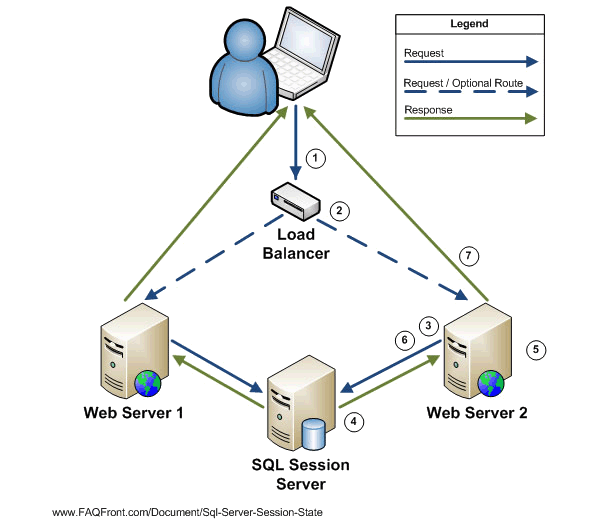
Web servers are used to respond to the requests sent from Web client computers. There are three components to a Web server: the hardware, operating system software, and Web server software. Some of the aspects looked at when choosing how to develop their site include:
- estimating the expected number of visitors;
- average number of pages to be viewed in a visit;
- size of the Web pages; and
- maximum number of visitors at one time.
When all this is considered, the next step is determining the hardware and software requirements to accomplish these goals.
In general, there are five types of websites: development, intranet, extranet, transaction-processing, and content-delivery. Each of these is descirbed below.
Development sites are those that companies use to compare designs with little to no investment in the site itself.
Intranets are used by companies to allow employees and others to access information on the network. Extranets are a form of an intranet that allow certain outside users to access information that they may need.
Transaction processing sites are those that perform commerce activities; must be accessible any time of the day.
Content delivery sites are those that contain information such as news, weather, and other digital information. These sites must be accessible with little to no interruption
Those that use a computer are generally referred to as being a Web client, and the network they are connecting to is often referred to as a Web server. The computers that are used for each are fairly similar, but those used for servers are usually much faster and have more memory than computers used as Web clients. The programs used to access the Internet are called Web browsers, or Web client software, and the most common browsers are Microsoft Internet Explorer, Mozilla Firefox, and Apple Safari.
Dynamic content is content that varies by the requests of the user, while static content stays the same no matter who is using the site. To create dynamic pages, most companies use one of two methods: server-side scripting or dynamic page-generation technology.
Server-side scripting is the slower of the two options, in which a program running on a server creates the requested page only after receiving the request from the Web client. However, most dyanmic Web sites use the dynamic page-generation technology due to the fact that it is much faster and there are more options available. In general there are three alternatives; ASP by Microsoft, JSP by Sun Microsystems, and PHP by Apache. Also, Adobe has its Cold Fusion program as an extra alternative.
There are many options when designing a page with dynamic content, and while some pages have to be completely refreshed, there is also the option of using software such as AJAX, or asynchronous JavaScript and XML, to allow the user to send requests to update small portions of the page as edited.
There are some people that are questioning the future of dynamic page content since it really just shifts the creation process from someone who works exclussively with HTML to those that are experienced in PHP coding.
There are many ways in which the term server is used, but in general the term is used for any connection of computers that make files or programs available to the users connected to the server. Servers that are used for certain services are often labeled for these tasks, such as,
- Web server, or one that is used to connect to the Internet and runs Web server software;
- E-mail server, or a server computer that is used to manage incoming and outgoing e-mail messges;
- Database server, or a server computer that contains database management software.
Web Client/Server Communication
When a user types in the URL for a particular Web site, the request is sent to the server that contains that site and sends back a response in the form of the requested page. This process can be slowed drastically when there is a large amount of multimedia located on the site.

There are three general types of architectures used for Web pages. In a two-tier architecture, the client sends a request to the Internet, which sends the request to the server the page is located on. Then the server sends a response back through the Internet to the client in the form of an HTML page.
Three-Tier & N-Tier Architectures
In the three-tier architecture, there is the additon of a dynamic element, such as a database. The n-tier architecture allows for more business functions to be performed right on the site, but only show the user the information that is requested instead of having them go through all the same processes themselves.